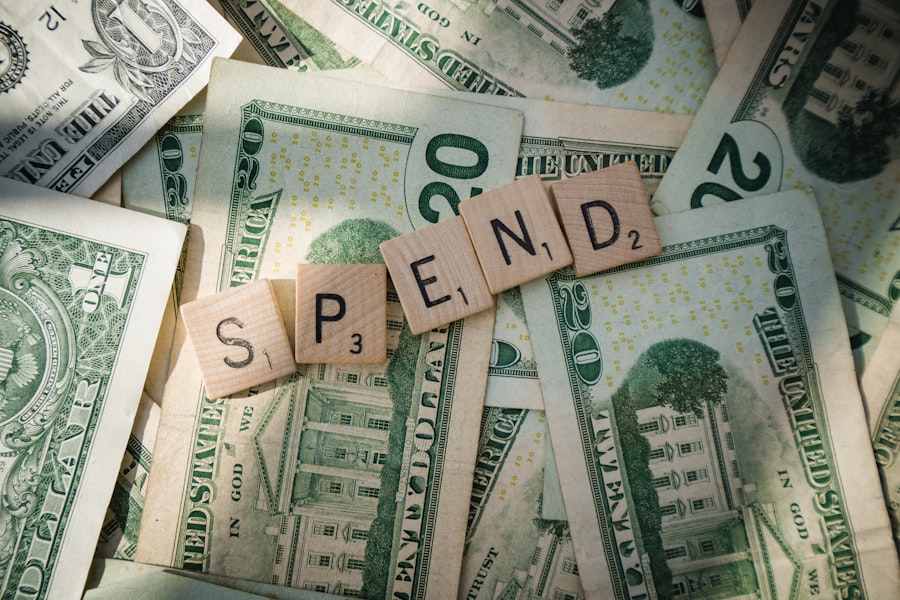To effectively manage your finances, the first step is to gain a comprehensive understanding of your income and expenses. This involves not only knowing how much money you bring in each month but also having a clear picture of where that money goes. Income can come from various sources, including salaries, bonuses, rental income, dividends, and side hustles.
It is crucial to account for all these streams to get an accurate representation of your financial situation. For instance, if you earn a salary of $4,000 per month but also receive $500 from freelance work, your total monthly income is $4,500. On the other hand, expenses can be categorized into fixed and variable costs.
Fixed expenses are those that remain constant each month, such as rent or mortgage payments, insurance premiums, and loan repayments. Variable expenses fluctuate and can include groceries, entertainment, and dining out. By tracking these expenses meticulously over a few months, you can identify spending patterns and areas where you might be overspending.
For example, if you notice that your dining out expenses average $300 a month, you may want to consider whether that amount aligns with your financial goals or if it could be reduced.
Key Takeaways
- Understanding your income and expenses is the first step to taking control of your finances.
- Creating a realistic budget helps you allocate your income towards essential expenses and savings.
- Prioritizing your financial goals helps you focus on what’s most important to you and your future.
- Eliminating unnecessary expenses can free up more money to put towards your financial goals.
- Building an emergency fund is crucial for unexpected expenses and financial stability.
Creating a Realistic Budget
Once you have a clear understanding of your income and expenses, the next step is to create a realistic budget. A budget serves as a financial roadmap, guiding your spending and helping you allocate resources effectively. To create a budget that reflects your lifestyle and financial goals, start by listing all sources of income and all monthly expenses.
This will allow you to see how much money you have available after covering essential costs. When developing your budget, it’s essential to be realistic about your spending habits. Many people make the mistake of underestimating their variable expenses or overestimating their ability to save.
For instance, if you typically spend $150 on entertainment but budget only $50, you are setting yourself up for failure. Instead, consider using the 50/30/20 rule as a guideline: allocate 50% of your income to needs (fixed expenses), 30% to wants (variable expenses), and 20% to savings and debt repayment. This framework can help ensure that your budget is balanced and sustainable over the long term.
Prioritizing Your Financial Goals

With a budget in place, it’s time to prioritize your financial goals. Financial goals can vary widely from person to person; they may include saving for retirement, purchasing a home, funding education for children, or simply building wealth. To effectively prioritize these goals, consider both short-term and long-term objectives.
Short-term goals might include saving for a vacation or paying off credit card debt within a year, while long-term goals could involve saving for retirement or building a substantial investment portfolio. When prioritizing these goals, it’s important to assess their urgency and importance. For example, if you have high-interest debt, such as credit card balances, paying that off should take precedence over saving for a vacation. Conversely, if you have a stable financial situation with no debt, you might focus on long-term investments or retirement savings. Creating a timeline for each goal can also help keep you motivated and accountable.
By breaking down larger goals into smaller milestones, you can track your progress and make adjustments as needed.
Eliminating Unnecessary Expenses
| Category | Metric |
|---|---|
| Utilities | Percentage reduction in energy consumption |
| Subscriptions | Number of unnecessary subscriptions cancelled |
| Travel | Percentage decrease in travel expenses |
| Entertainment | Amount saved from reducing unnecessary entertainment expenses |
One of the most effective ways to improve your financial situation is by eliminating unnecessary expenses. This process requires a critical examination of your spending habits and identifying areas where you can cut back without sacrificing your quality of life. Start by reviewing your monthly expenses in detail; look for subscriptions or memberships that you no longer use or need.
For instance, if you have multiple streaming services but only watch one regularly, consider canceling the others. Another area to scrutinize is discretionary spending. This includes dining out, entertainment, and shopping for non-essential items.
While it’s important to enjoy life and treat yourself occasionally, being mindful of these expenditures can lead to significant savings over time. For example, if you typically spend $200 a month on dining out but decide to reduce that by half by cooking at home more often or opting for less expensive dining options, you could save $1,200 annually. These savings can then be redirected toward your financial goals or emergency fund.
Building an Emergency Fund
An emergency fund is a crucial component of financial stability and should be prioritized once you have a handle on your budget and expenses. This fund acts as a financial safety net in case of unexpected events such as job loss, medical emergencies, or urgent home repairs. Financial experts often recommend saving three to six months’ worth of living expenses in an easily accessible account.
For example, if your monthly expenses total $3,000, aim to save between $9,000 and $18,000 in your emergency fund. Building this fund requires discipline and commitment. Start by setting aside a small percentage of your income each month specifically for this purpose.
Automating transfers to a separate savings account can help ensure that you consistently contribute to your emergency fund without the temptation to spend that money elsewhere. Additionally, consider using any windfalls—such as tax refunds or bonuses—to boost your emergency savings more quickly.
Managing Debt

Assessing Your Debt
The first step in managing debt is to take stock of what you owe—list all debts along with their interest rates and minimum monthly payments. This will give you a clear picture of your overall debt situation and help you prioritize which debts to tackle first.
Debt Management Strategies
There are several strategies for managing debt effectively. The snowball method involves paying off the smallest debts first while making minimum payments on larger debts; this approach can provide psychological motivation as you see debts eliminated quickly. Alternatively, the avalanche method focuses on paying off debts with the highest interest rates first, which can save you money in interest payments over time.
Consistency is Key
Whichever method you choose, consistency is key; make it a habit to allocate extra funds toward debt repayment whenever possible.
Investing for the Future
Investing is a critical component of building wealth and securing your financial future. While saving is important for short-term goals and emergencies, investing allows your money to grow over time through compound interest and market appreciation. There are various investment vehicles available, including stocks, bonds, mutual funds, real estate, and retirement accounts like 401(k)s and IRAs.
Before diving into investing, it’s essential to educate yourself about the different options available and assess your risk tolerance. Stocks tend to offer higher potential returns but come with greater volatility; bonds are generally considered safer but provide lower returns. A diversified portfolio that includes a mix of asset classes can help mitigate risk while still allowing for growth potential.
Additionally, consider setting up automatic contributions to investment accounts; this strategy not only simplifies the process but also takes advantage of dollar-cost averaging.
Seeking Professional Financial Advice
Navigating personal finance can be complex and overwhelming at times; seeking professional financial advice can provide valuable insights tailored to your unique situation. Financial advisors can help with various aspects of financial planning, including budgeting, investment strategies, retirement planning, tax optimization, and estate planning. When choosing an advisor, it’s important to consider their qualifications, experience, and fee structure.
A good financial advisor will take the time to understand your financial goals and develop a personalized plan that aligns with those objectives.
For instance, if you’re unsure about how to allocate investments based on your risk tolerance or time horizon for retirement, an advisor can offer recommendations based on market trends and historical data.
Additionally, they can help you navigate complex financial situations such as inheritance or divorce by providing tailored strategies that address your specific needs. In conclusion, managing personal finances requires a multifaceted approach that encompasses understanding income and expenses, creating realistic budgets, prioritizing goals, eliminating unnecessary costs, building emergency funds, managing debt effectively, investing wisely for the future, and seeking professional advice when needed. Each step plays a vital role in achieving financial stability and ultimately securing long-term wealth.
If you are looking for a budget planner to help you stay on track with your finances, you may want to check out this article on the best and cheapest budget planner available today. This article provides a comprehensive review of different budget planner options to help you find the one that best fits your needs. Additionally, you may also want to explore budget tracker apps, which can help you monitor your spending and savings goals. Check out this article on budget tracker apps to find the right tool to help you manage your finances effectively.



























